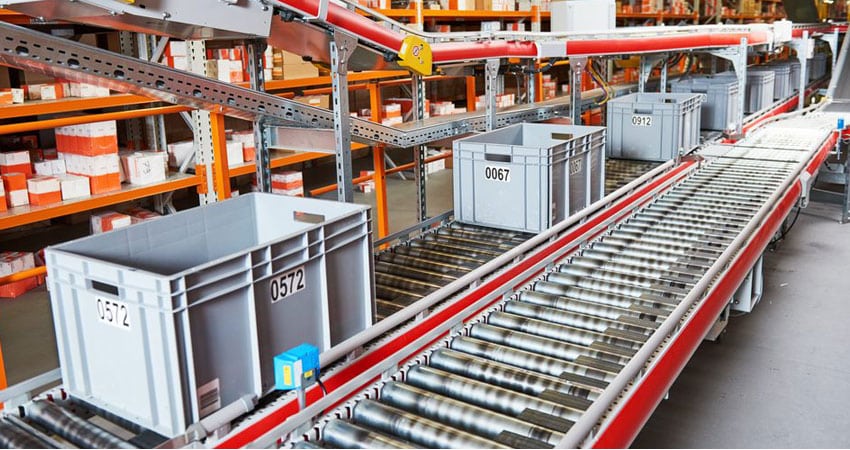The holiday shopping season is right around the corner, and warehouses and distribution centers will soon be bustling to get online orders out the door. And if past Black Friday sales figures are any indication, holiday order fulfillment numbers could reach an all-time high this year.
According to data from Adobe Digital Insights, Black Friday 2016 set a record $3.34 billion in online sales, a 21.6% increase over 2015. As more orders come into the warehouse, the burden of fulfillment falls to warehouse management and staff, who must deal with a higher number of SKUs and larger, more complex orders.
The challenges of the holidays take a profound toll on warehouses that employ manual order fulfillment processes, requiring staff to run up and down the aisles to pick products and pack orders for shipment. During times of routine volumes these operations are labor intensive and time consuming, and the strain only multiplies during peak season. For companies struggling to keep up manually with holiday demand, it may be time to consider warehouse automation.
Below are three ways that automation can streamline warehouse operations and ease the burden of holiday order fulfillment:
Minimize Holiday Order Complexities
Companies with automated warehouses typically have both a Warehouse Management System (WMS) and a Warehouse Control System (WCS), often two discrete applications working together to manage inventory and move products. Recently however, more companies are turning to a Warehouse Execution System (WES), which combines the functionality of WMS and WCS into a single application. A WES offers the inventory management, storage optimization and traceability features of a WMS, and the automation control components of a WCS. It provides a real-time view of material handling equipment and personnel to all levels of an organization.
A WES is especially useful for fulfilling large, complex holiday orders with multiple products. In such cases, products within a single order may be dispersed throughout the warehouse, requiring numerous movements to retrieve everything. With control of material handling equipment, such as an automated storage and retrieval system (AS/RS), and oversight over inventory, a WES optimally marries products to customer orders – regardless of complexity – while minimizing the number of movements needed to fulfill the order. With fewer moves, orders are more accurate and get out the door faster, keeping holiday shoppers happy and the warehouse running smoothly.
Eliminate the Need for Additional Seasonal Staff
Companies typically hire temporary warehouse staff to accommodate the holiday surge in customer orders. With a WES, they don’t need to rely as heavily on additional resources because it makes processes more efficient and coordinates automation so fewer associates are needed. This allows companies to extend the workday beyond normal shift hours, lightening the next day’s workload and getting ahead of manual tasks to meet heavy holiday demand.
By significantly reducing the need for temporary staff, companies save money and resources. The ability to handle everyday activities as well as increased warehouse activity during peak times is a fundamental part of an automated system’s design.
Reduce Time to Prepare Orders for Shipment
Warehouses are not the only players in the supply chain that struggle during the holiday season. Carriers also stretch their resources and put fleets to the test. They’re not only transporting a higher volume of orders, but meeting tighter delivery timeframes. And as always, the timeliness of deliveries is critical to customer satisfaction.
Warehouses can do their part in accelerating time to delivery through automation. A WES has built-in order planning processes which allow shipment planners and dock coordinators to determine inventory and transportation availability and compare them to order demand. With the speed and accuracy of an automated system, companies can prepare orders in the proper sequence often just hours before a truck arrives. In a more conventional operation, this process needs to be done much further in advance and the space needed to stage these orders increases. Conversely, an automated system reduces the truck dwell time during the order fulfillment process.
The challenges of holiday order fulfillment will not ebb with time but only increase as more people turn to ecommerce to complete their shopping. More than likely, this year will deliver a new record for peak online sales and holiday order fulfillment. Therefore, growing companies with manual warehouses that are worried about keeping up should consider automation in 2017.
Dave Williams is Director of Software and Solutions Delivery for Westfalia Technologies

